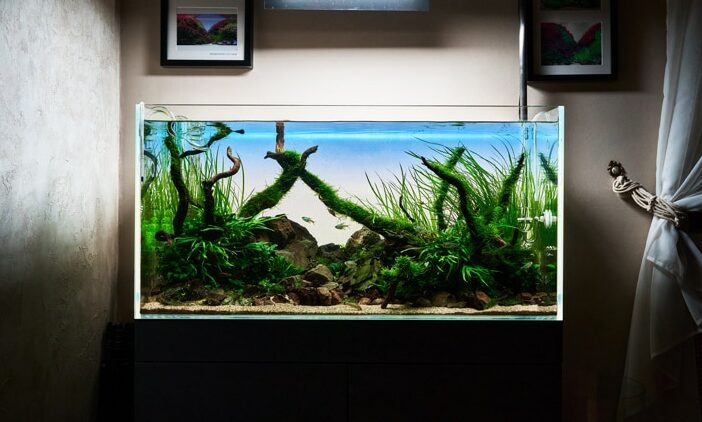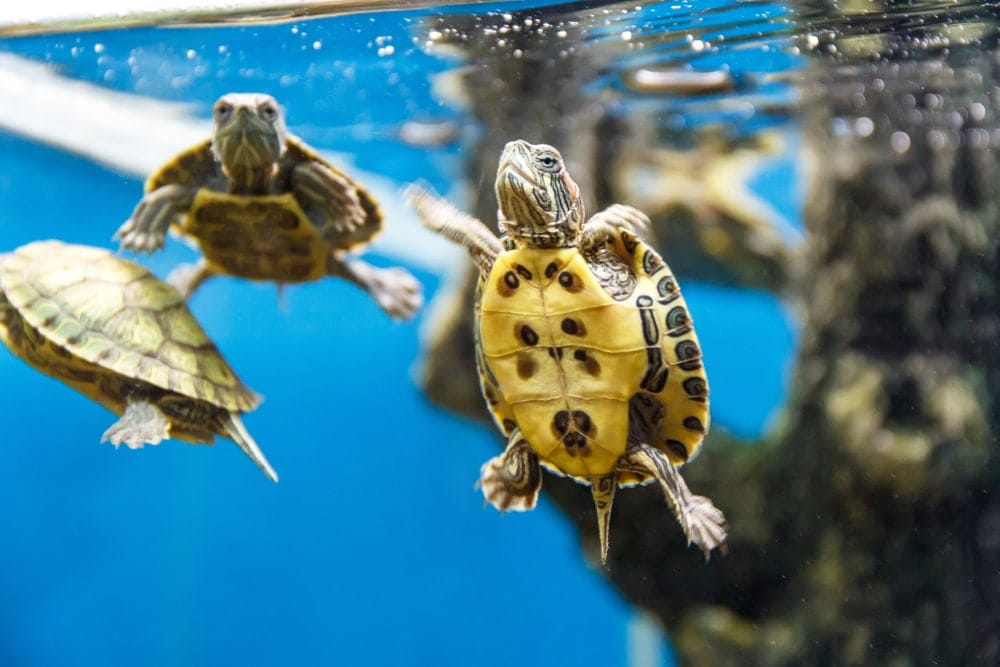5 Great Tank Mates for Texas Cichlids: Compatibility Guide 2024

Updated on
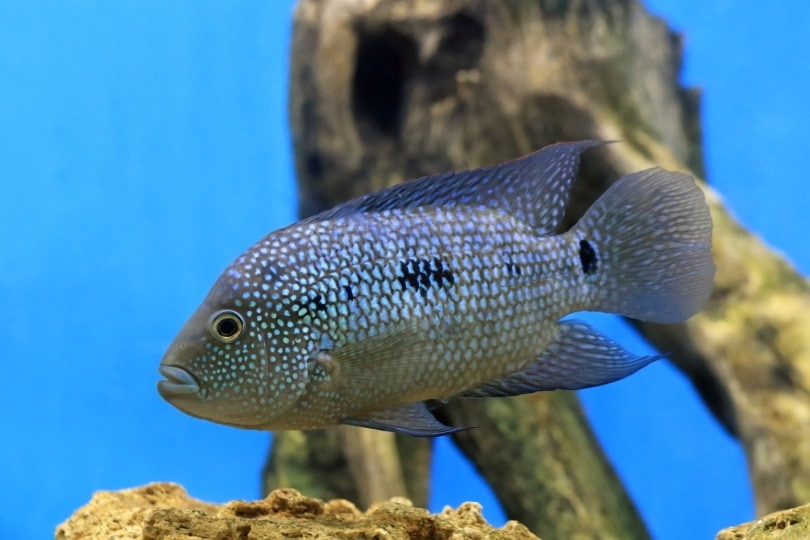
While a Texas Cichlid is a beautiful fish in its own right, having more fish means more action, and that’s always a perk. But what fish can coexist with a Texas Cichlid, and how easy is it to add fish to a tank?
We highlight the best five tank mates for Texas Cichlids before diving into what you need to do to have a successful aquarium experience.
Top 5 Tank Mates for Texas Cichlids
1. Silver Dollars (Metynnis argenteus)
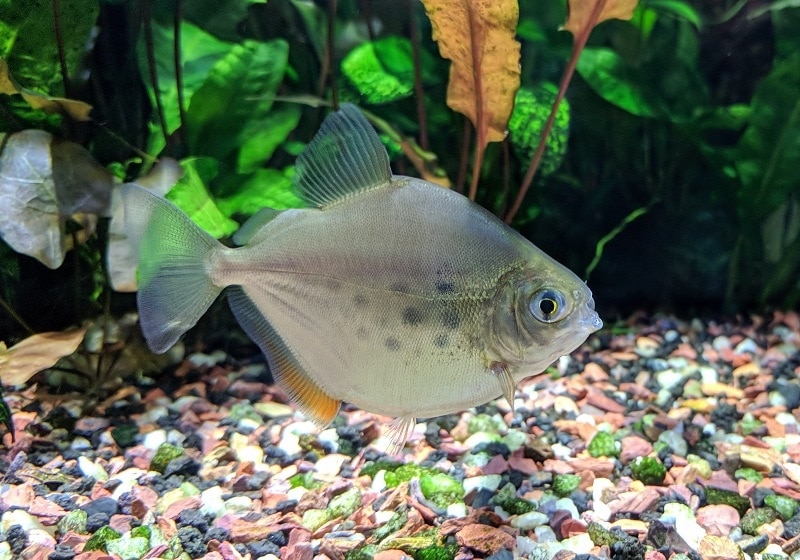
| Size | 6 inches |
| Diet | Herbivore |
| Minimum tank size | 75 gallons |
| Care Level | Easy |
| Temperament | Peaceful |
Silver Dollars make great tank mates for a Texas Cichlid — as long as you have enough space. Silver Dollars are schooling fish, and this gives them protection from the more aggressive Texas Cichlid.
But for a tank of just Silver Dollars, it needs to be at least 75 gallons. Considering a Texas Cichlid needs a 55-gallon tank, if you’re looking at keeping them together, you’ll need at least 150 gallons, and even that might not be enough.
2. Green Terror Cichlid (Andinoacara rivulatus)
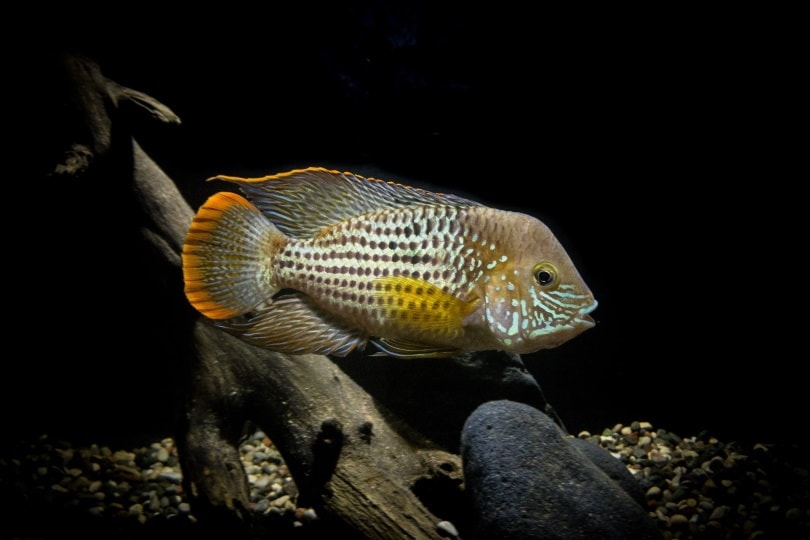
| Size | 12 inches |
| Diet | Worms, crustaceans, and insects |
| Minimum tank size | 50-gallon |
| Care Level | Medium |
| Temperament | Aggressive |
It might not seem like another aggressive fish is the best idea for a tank mate, but as long as you add them to the tank at the same time and have plenty of space, there shouldn’t be any problems.
The two fish view each other as not worth the trouble, and this means they can cohabitate. However, you need at least a 110-gallon tank to keep both species. Since Green Terrors and Texas Cichlids are aggressive and territorial, don’t expect them to spend any time playing together.
3. Jack Dempsey Fish (Rocio octofasciata)
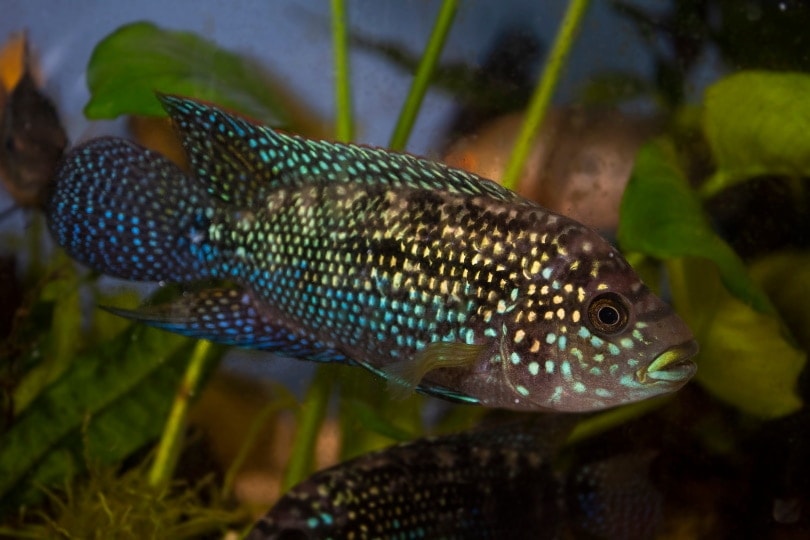
| Size | 7–8 inches |
| Diet | Worms, crustaceans, insects, and smaller fish |
| Minimum tank size | 55 gallons |
| Care Level | Medium |
| Temperament | Aggressive |
The Jack Dempsey Fish is an aggressive fish that serves as a decent tank mate for a Texas Cichlid. Ensure that you have at least a 110-gallon tank, and don’t expect them to spend any time together.
It’s best to add them to the tank together so they don’t have any territories already established. Keep in mind that a 110-gallon tank is the bare minimum, and an even larger tank is a better idea.
4. Plecos (Hypostomus Plecostomus)
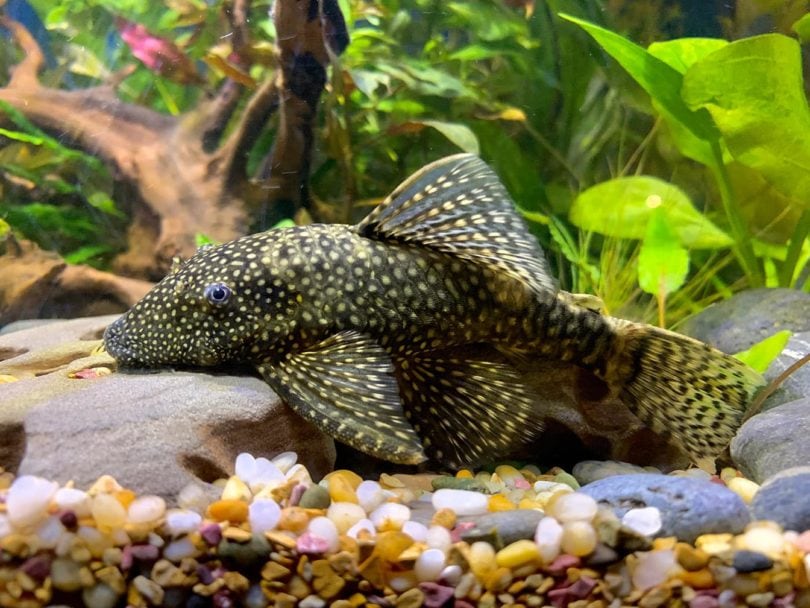
| Size | Up to 20 inches |
| Diet | Algae, veggies |
| Minimum tank size | 100 gallons |
| Care Level | Low |
| Temperament | Peaceful |
If you’re looking to add a tank mate with the best chance of success, a Pleco is the way to go. Get one that’s similar in size to or larger than your Texas Cichlid, and only get one Pleco.
While Plecos get along just fine with other fish, they can get territorial toward their own species. Also, keep in mind that some species of Plecos can require 150- to 200-gallon tanks, so always do your homework before bringing one home.
5. Oscar Fish (Astronotus ocellatus)
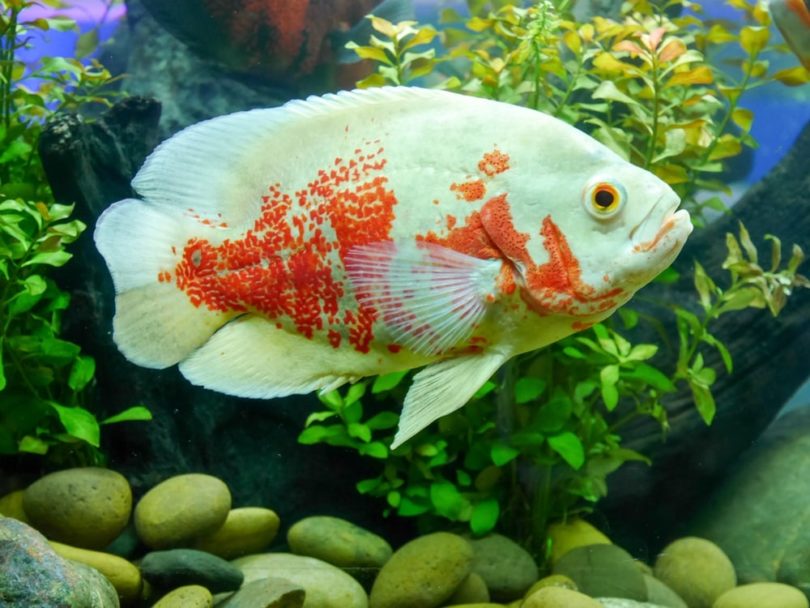
| Size | 12–16 inches |
| Diet | Crayfish, worms, and insects |
| Minimum tank size | 55 gallons |
| Care Level | Medium |
| Temperament | Semi-aggressive |
If you’re thinking of pairing an Oscar Fish with a Texas Cichlid, ensure that there’s plenty of room in the tank. A minimum of 110 gallons is best, but we recommend something closer to 150 gallons.
Both Texas Cichlids and Oscar Fish can get aggressive, and if they don’t have enough space, this can lead to a fight to the death. But if they do have enough space, they can usually do well together.
What Makes a Good Tank Mate for Texas Cichlid?
Finding a good tank mate for a Texas Cichlid isn’t easy. The key is to have a large enough tank and a fish that can hold its own without getting overly aggressive.
Attempting to add tank mates for a Texas Cichlid is not for the faint of heart, and there’s a good chance that you’ll lose a fish or two as you figure everything out.
Where Do Texas Cichlid Prefer to Live in the Aquarium?
If you’re looking at adding other fish to your aquarium, it’s best to understand where your Texas Cichlid likes to spend most of their time. Like most Cichlids, Texas Cichlids prefer to hang out near the bottom of the tank.
However, the Texas Cichlid is extremely territorial, and it’s all about the space. If you’re adding tank mates, get a bigger tank.
Water Parameters
Texas Cichlids need warm water to thrive because they’re subtropical fish, so if you’re adding tank mates, ensure that they can handle the warmer water. You’re aiming for a temperature between 68- and 74-degrees Fahrenheit.
From there, aim for a 6.5 to 7.5 pH level and a hardness level between 5 and 12 KH. None of these parameters are that hard to meet, and as long as you’re only housing a single Texas Cichlid, they’re relatively easy to care for.
It’s when you start adding tank mates that it becomes a bit more challenging.

Size
When you’re shopping for tank mates for an aggressive fish, you need to get fish around the same size. The Texas Cichlid can grow to about 12 inches when fully grown, so you don’t want to get anything too much smaller than that.
Silver Dollars are the smallest-sized fish that we recommend, and they’re only safer because they’re in schools.
Also, keep in mind that is regarding adult fish. If you add younger fish, know that they tend to be smaller, and your Texas Cichlid might eat them before they have a chance to get larger.
Aggressive Behaviors
Like most Cichlids, the Texas Cichlid is extremely territorial. That’s why it’s crucial that you have enough space for each fish to establish their own territory.
A single Texas Cichlid needs a 55-gallon tank to live, but they’ll appreciate extra space if they’re living by themselves.
So, if you’re adding a tank mate, you need plenty of space. At a bare minimum, you need 110-gallon tanks, but we highly recommend 150 gallons or larger to reduce the chances of aggressive behaviors.
Still, with a Texas Cichlid, there are never any guarantees that they’ll all make it.
Benefits of Having Tank Mates for Texas Cichlid in Your Aquarium
While there are typically multiple benefits to adding a tank mate to your aquarium, if you have a Texas Cichlid, the benefits are all for you. Texas Cichlids live alone in the wild, and even if you add a tank mate, they’re not going to spend much time around them.
The advantage of adding a tank mate is that it gives you a more active aquarium, but that’s an aesthetic boost for you, and it doesn’t do anything for your Texas Cichlid.
Setting Up Your Aquarium
Texas Cichlids are territorial fish, so if you want tank mates, you need tons of hiding spaces, even if it’s a much larger tank. Add plants, rocks, décor, caves, and any other items that your Texas Cichlid can turn into hiding places.
Even if you have a 250-gallon tank, if your Texas Cichlid can spot another fish on the other side all the time, you’re going to have problems. The good news is all this décor and plants not only looks aesthetically pleasing, but it’s ideal for your tank too!
So, have fun setting up a beautiful tank with plenty of live plants and décor.
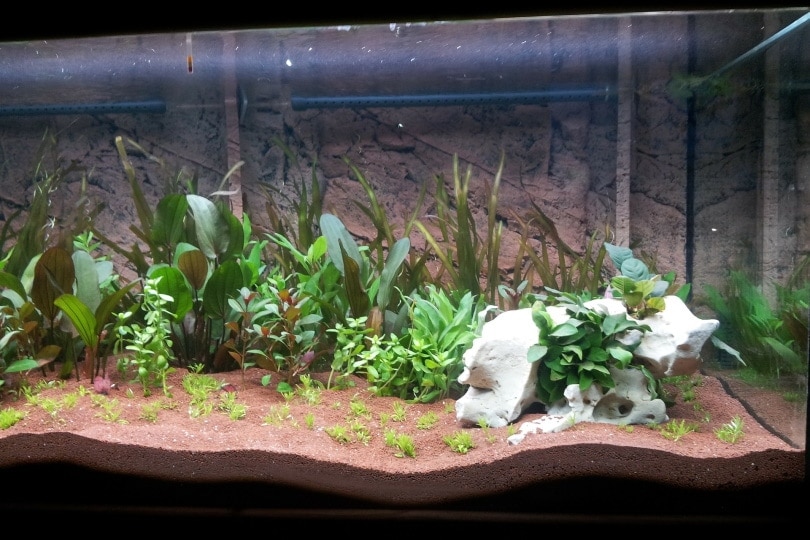
Conclusion
Texas Cichlids are solitary fish in the wild, but that doesn’t mean you can’t find them a few tank mates if you take your time. Just ensure that you have plenty of space; otherwise, you’ll be back down to one fish in the morning.
Also, consider that while a single Texas Cichlid is easy to care for, if you’re adding other fish, you’re challenging yourself, and there might be a learning curve. There’s nothing wrong with this, but there could be a few expensive lessons along the way.
See also:
Featured Image Credit: Grigorii Pisotsckii, Shutterstock




